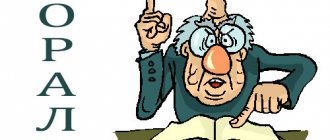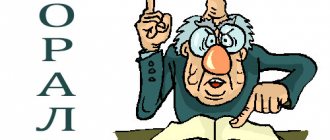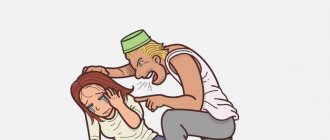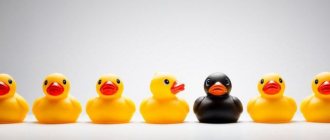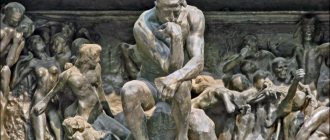- November 29, 2018
- Psychological terms
- Olgerd Semenov
What is behavior? The answer to this question is not as simple as it might seem at first glance. Behavior is the response of a system or organism to various stimuli or actions. Whether they are internal or external, conscious or subconscious, open or hidden, and voluntary or involuntary.
Understanding behavior computer science perspective, it consists of actions, operations, interactions with surrounding beings and environment and its properties. Behavior can be represented as a vector of existence. The rules of behavior are what this very vector determines.
Biological context
Biology is very closely related to the issue described in this article. Social behavior is not something that is unique to humans. It arose as a result of long-term natural selection. Although there is some disagreement about how to precisely define behavior in a biological context, one general interpretation, based on a meta-analysis of the scientific literature, states that “behavior is the internally coordinated responses (actions or inactions) of entire living organisms (individuals or groups) to internal and/or external incentives.”
A broader definition of behavior, applicable to plants and other organisms, is similar to the concept of phenotypic plasticity. It describes it as a response to an event or environmental change during a person's life that is different from other physiological or biochemical changes and occurs more quickly. At the same time, it excludes changes that are the result of development (ontogenesis). Behavior may be innate or learned from the environment. The principle of a behavior is whether it is dependent on the environment or is externally learned. That is, it is influenced by both the environment and the environment of other creatures and the will of the subject himself.
What is behavior? It can be considered as any action of the organism that changes its relationship to the environment. It provides access beyond the body into the environment.
Golden rule of behavior
In addition to the fact that we all know the generally accepted rules of behavior, there is a golden rule. It originated in ancient times, when the first essential requirements for human morality were formed. Its essence is to treat others in the way you would like to see this attitude towards yourself. Similar ideas were found in such ancient works as the teachings of Confucius, the Bible, Homer's Iliad, and so on. It is worth noting that this is one of the few beliefs that has survived to this day almost unchanged and has not lost its relevance. The positive moral significance of the golden rule is determined by the fact that it practically orients the individual towards the development of an important element in the mechanism of moral behavior - the ability to put oneself in the place of others and emotionally experience their condition. In modern morality, the golden rule of behavior is an elementary universal prerequisite for relationships between people, expressing a continuity with the moral experience of the past.
Ecology
Behavioral ecology is the study of the evolutionary basis of animal behavior due to environmental pressures. Behavioral ecology arose from ethology after Niko Tinbergen outlined four questions that should be considered in the study of animal behavior, among which are proximate causes, ontogeny, survival, and phylogeny.
If an organism has a trait that provides a selective advantage (that is, has adaptive value) in its environment, then natural selection will favor it. Adaptive meaning refers to the expression of a trait that affects fertility, as measured by an individual's reproductive success. Adaptive traits are those that produce more copies of a person's genes in future generations. Maladaptive traits are those that cause you to produce less. For example, if a bird that can sing louder attracts more mates, and singing loudly is an adaptive trait for that species because a louder bird is more common than less loud birds, thereby passing the louder genes into future generations.
Psychotypes according to Jung.
Jung divided personality types based on two general concepts: introversion or extroversion, as well as the main preferences of each personality type:
Condition 1. Where does a person get energy from?
An introvert is a person whose attention is directed inward; he receives energy from within. An extrovert's interest is directed outward; he receives energy from his environment. Condition 2
How a person accumulates knowledge. Methodically and scrupulously, based on facts, the sensory-sensing psychotype collects information. Intuitive people act mostly irrationally, based on the situation. Condition 3. How a person makes decisions. The thinking-logical type acts after an objective analysis of data. The emotional-feeling type makes decisions based on emotions, without unnecessary thinking. Condition 4. Concerns lifestyle. The rational type systematically implements the planned scenario. The perceiving type is often unpredictable, spontaneous, and flexible.
Based on the above conditions, Jung identified 8 psychotypes:
The Science of Survival
Individuals always compete with other individuals for limited resources, including food, territory, and mates. Conflict occurs between predators and prey, between rivals and comrades, between siblings, partners, and even between parents and offspring. Roles of behavior are a special niche that the subject occupies in this permanent conflict with everyone.
The meaning of social behavior depends in part on the animal's neighbors. Behavior is something that is often consistent with surrounding members of the same species. For example, the more likely a rival male is to abandon a threat, the more value the second male gains from the threat he supposedly poses. However, to protect the group, males can also act as a team. When a population exhibits a series of interacting social behaviors such as this, it can develop a stable pattern known as an evolutionarily stable strategy (or ESS). This term, derived from economic game theory, became prominent after John Maynard Smith (1982) recognized the possible application of the concept of Nash equilibrium to model the evolution of behavioral strategies.
Human society
Human behavior is the responses of people or groups of people to internal and external stimuli. It refers to the array of every physical action and observable emotion associated with people. And also with humanity. Although specific personality and temperament traits may be more consistent, other behaviors will change as a person moves from birth to adulthood. In addition to patterns dictated by age and genetics, behavior is something that is driven, in part, by thoughts and feelings. This is an understanding of the individual psyche, identifying relationships and values among other things. Social behavior is a subset of human behavior that examines the significant mutual influence of social interaction and culture. Additional influences include ethics, environment, authority, rapport, hypnosis, persuasion, and coercion. Moral behavior is that which is consistent with social ethics and morality.
Mixed classifications
Modern system classifications are associated with the names of K. Jung, G. Eysenck, L. N. Sobchik, L. Ya. Dorfman and others. The authors of modern system concepts try to summarize as much as possible the results of empirical studies of individual human characteristics within the framework of a single typological model. Such a model, as a rule, is the center of a structure that combines general, typological and individual psychological characteristics of a person.
Examples
Such system classifications can be: “The Theory of Leading Tendencies” by L. N. Sobchik, “The Concept of the Meta-Individual World” by L. Ya. Dorfman.
Social norms
The behavior of people (and other organisms, or even machines) falls within a range, some of which are common and some of which are unusual. That is, some types of behavior are acceptable forms of behavior, and some are unacceptable. In sociology, it generally includes actions that have no meaning, are not directed at other people, and therefore all basic human actions. Behavior in this general sense should not be confused with social behavior, which is more advanced social action specifically directed towards other people. Acceptability of behavior depends largely on social norms. And it is regulated by various means of social control. Human behavior is studied by the specialized academic disciplines of psychiatry, psychology, political science, sociology, economics and anthropology. Standards of behavior are what must be observed when living in society.
A person's behavior is felt throughout his life. It involves acting on various factors such as genetics, social norms, religious belief and relationships. Behavior is influenced by certain traits inherent in each person. The characteristics vary from person to person and can produce different actions or behaviors depending on each individual. Social norms also influence behavior. Due to the inherent conformist nature of human society as a whole, people are pressured to adhere to certain rules and to follow rules for exhibiting certain behaviors in society. Which determines the interaction of people. Different types of behavior are considered acceptable or unacceptable in different societies and cultures. The core belief can be perceived through that person's religion and philosophy. It shapes the way a person thinks. And this, in turn, leads to different behavior among people. Attitude can be defined as "the degree to which a person has a favorable or unfavorable evaluation of the behavior in question." A person's attitude is basically a reflection of the behavior he or she will portray in specific situations. Thus, human behavior is greatly influenced by the habits we use on a daily basis. Deviant behavior is something that receives a negative assessment from society.
The concept of rules of behavior, etiquette
Etiquette is a set of norms and rules that regulate a person’s relationships with others. This is an integral part of public culture (culture of behavior). It is expressed in a complex system of relationships between people. This includes concepts such as:
- polite, courteous and protective treatment of the fair sex;
- a sense of respect and deep respect for the older generation;
- correct forms of everyday communication with others;
- norms and rules of dialogue;
- being at the dinner table;
- dealing with guests;
- fulfillment of the requirements for a person’s clothing (dress code).
All these laws of decency embody general ideas about human dignity, simple requirements of convenience and ease in human relationships. In general, the rules of conduct coincide with the general requirements of politeness. However, there are also strictly established ethical standards that are immutable.
- Respectful treatment of students to teachers. Maintaining subordination in relation of subordinates to their management.
- Standards of behavior in public places, during seminars and conferences.
The influence of genetics
Long before Charles Darwin published On the Origin of Species in 1858, animal breeders knew that behavioral patterns were somehow influenced by inheritance from parents. Studies of identical twins compared with less closely related individuals and children raised in foster care have helped scientists understand the influence of genetics on human behavior. The study of human behavioral genetics is still evolving steadily using new techniques such as genome-wide association studies.
Hierarchy of equality
Animal families exhibit varying degrees of hierarchy. The individual is looking for a specific reaction among its fellows in order to become a leader.
If it were not possible to achieve emotions of recognition from family members, then the individual would not bother. It turns out that if an individual seeks the attention of others, then it tries by any means to become a leader, that is, it achieves its goals through bellicose behavior.
People's behavior is almost the same - as soon as those around them provide their emotions with recognition, one of the members of society becomes a leader. For example, emotions of recognition go to authoritative people who have somehow attracted the attention of society. People brought up in a strict home hierarchy display aggressive behavior towards members of their family or towards weaker people.
Role of the group
Social norms, often the unspoken rules of a group, shape not only our behavior but also our relationships. An individual's behavior varies depending on the group of which he is a part, as well as the characteristics of the society that allow its norms to greatly influence society. Without social norms, human society will not function, as is evident in some countries today. People would have to be more abstract in their behavior as there would be no pre-tested "normal" standardized way of life and people would be able to make many more choices for their own personal good. However, the institutionalization of norms is inherent in human society. Perhaps as a direct result of the desire to be accepted by others, which causes people to manipulate their behavior in order to “fit in” with others. Depending on their nature, norms can impact different segments of society either positively (e.g., eating, dressing warmly in winter) or negatively (e.g., racism, drug use).
Personality archetypes
One of the methods for assessing mental qualities was the definition of an archetype.
An archetype is the basis that determines a person’s feelings, thoughts, behavior and needs. Based on this knowledge, the psychotherapist helps to get rid of unwanted complexes and change the course of his life. Jung's archetypes are part of the universal unconscious, a genetic memory given to a person from birth that shapes his worldview.
6.1
6 Archetypes of Carl Jung
Self is the harmonious interaction of the conscious and unconscious in a person as a source of creative energy. The balance of opposing elements of the psyche is normalized. Jung formulated the prototype of the self as a basic, all-encompassing quality, a sign of balance and coexistence of opposites. Many people have not developed this quality and are unaware of its existence.
The person prefers to wear a mask and meet the expectations of the environment. Representative of the collective psyche. The chosen role helps to communicate with society, determines the choice of profession, attitude towards people, tastes. May suppress individuality.
Shadow. A manifestation of the unconscious, which is repressed due to social rejection. Thoughts, memories, feelings that are not recognized by a person. According to Jung's theory, the ego's task is to realize the potential of the Shadow for personality development.
Animus. The masculine component of feminine nature, the ability to express personal opinion and defend it. A positive animus means insight, wise, balanced actions. Negativity encourages recklessness. The animus strives to influence the world around it and is expressed in categorical and firm judgments.
Anima. Manifestation of the feminine principle in a man: sensual impulses, emotionality, frivolity, love at first sight, romance. Femininity is directed inside a person, towards awareness of feelings and self-awareness. Men under the influence of the animus are emotionally unstable, irritable, and impulsive.
The description of psychotypes makes it possible to determine the strengths and weaknesses of a person’s character, to avoid conflict situations and misunderstandings. This is an opportunity to understand the environment and the motives of their behavior in order to coexist harmoniously in the family and society.
What are the 12 secret words that can quickly make a man fall in love?
What is the secret of these words? Press the button and watch the video to the end.
3.1
How to tie a man to you for life?
Creativity and Creativity
It is assumed that creativity is characteristic of every person to one degree or another. Creativity pushes people to step out of their comfort zone. For example, the invention of the first practical airplane by the Wright brothers. The aircraft first flew in 1903, and fifty years later the first passenger jet airliner was introduced. Creativity has helped people live in harsh conditions and has also made some of them rich. We also use creativity in our daily lives, such as when finding a destination.
The role of faith
Another important aspect of human behavior is the “core belief” of people. Such belief may manifest itself in religion, philosophy, culture and/or personal beliefs, and often influences the way a person behaves. As of 2012, about 80% of the United States public identifies with a religion, and religion can play a large role in society. It is natural that something that plays a big role in society influences human behavior. Morality is another core belief factor that influences what this article is about. Emotions associated with morality include shame, pride and discomfort - and these can change a person's behavior. Most importantly, shame and guilt have a big impact on behavior.
Antique typology
Even before Theophrastus, Hippocrates created the doctrine of the internal juices (or liquids) in the human body. This is: yellow bile (lat. cholos),
black bile (lat.
melas cholos),
blood (lat.
sanguis)
and mucus (lat.
phlegma)
. From the four main juices he derived four temperaments:
- Choleric (mood changes strongly and quickly, tense, mental states are directed primarily outward).
- Melancholic (the mood is strong, but changes slowly, tense, mental states are directed mainly inward).
- Sanguine (mood changes slightly and quickly, is not tense, mental states are directed primarily outward).
- Phlegmatic (mood changes slightly and slowly, is not tense, mental states are directed primarily inward).
The role of culture
Finally, culture also greatly influences human behavior. Children absorb the beliefs of certain cultures from such a young age that they change greatly as they grow. These beliefs are taken into account in everyday life. Which leads to people from different cultures acting differently. These differences affect how different cultures and regions of the world interact and express themselves.
Modern problems of psychological classifications
Problems of psychological classifications are associated with the high complexity and ambiguity of mental reality. It is much easier to classify the material world.
In psychology we are faced with the fact that with the help of consciousness we can study consciousness. Here new opportunities open up, but also new limitations associated, in particular, with subjectivity and its overcoming. As is known, in the human psyche there are conscious and unconscious components of cognition. They often work independently, as two different assessors of the situation. Therefore, assessments using projective tests (which are aimed at exploring the unconscious) often conflict with self-assessments using questionnaires (which appeal to consciousness or conscious behavior).
To assess a psychological type, it is important that the measuring instrument (test, technique) be “calibrated” not for the present and relevant, but for the typical, more likely to be repeated throughout life. That’s why methods that allow typologists to see the present through the prism of an individual’s entire life journey are so important: biographical, structured conversation, longitudinal observation in a natural situation
Such methods are well developed in clinical research. When working with healthy people, they are rather the exception.
Example:
Personality research program of Lazursky A.F.
The issue of training a qualified specialist in the field of research and diagnosis of types is an independent problem. You need a whole range of knowledge and skills.
of the diagnostician is important for measuring psychological type.
to see not individual fragments of mental reality, but to operate with systems (cognitive, value-motivational, emotional, volitional) and take into account their holistic nature, knowledge of stable variants of these systems, and the ability to compare them. Comparing and evaluating these systems is complicated by the lack of a well-developed methodological framework: there is no consensus on what to compare and how to evaluate.
To the researcher
it is necessary to be able to work with both qualitative and quantitative methods of studying empirical reality, taking into account the following factors:
- The scale and complexity of the study (the ability to draw and take into account several plans at different scales)
- The nature and specificity of the distribution of properties and characteristics in the environment under study.
- A minimum set of subscales that do not violate the completeness and construct validity of a psychological property.
Marketing
Consumer behavior refers to the processes in which consumers participate. And to the reactions they have to products or services. It is related to consumption and the feelings that consumers experience while purchasing and consuming goods and services. Consumers recognize needs or wants and go through a process to satisfy those needs. An individual's consumer behavior is the process they undergo as a customer, which includes the types of products purchased, the amount of money spent, the frequency of purchases. And what influences him when making a purchasing decision.
There are many factors that influence consumer behavior, and there are both internal and external factors. Internal factors include attitudes, needs, motives, preferences and perceptual processes, while external factors include marketing activities, social and economic factors and cultural aspects. Dr. Lars Perner from the University of Southern California argues that there are also physical factors that influence consumer behavior. For example, if a consumer is hungry, then this physical feeling of hunger will influence him to go out and buy a sandwich to satisfy his hunger.
Typology of psychotypes according to A.E. Lichko
Soviet psychiatrist A.E. Lichko, based on extensive research, identified the following personality types in psychology:
- Schizoid;
- Hyperthymic;
- Hysterical;
- Cycloid;
- Psychasthenic;
- Epileptoid;
- Sensitive;
- Conformal;
- Emotionally labile;
- Asthenoneurotic;
- Paranoid;
- Unstable;
Let us briefly describe personality psychotypes, external signs and behavioral characteristics.
1. The schizoid personality type gives a person duality. They tend to be withdrawn, experience difficulties in interpersonal communication, and are emotionally cold. They have an extravagant imagination. Alcohol is often used as a communication drug.
2. The hyperthymic type is characterized by mobility, restlessness, sociability, noisiness, high spirits, lack of perseverance, and mischief. The importance of their own personality is greatly overestimated, they are drawn to companies, sometimes asocial.
3. Hysterical types aspire to leadership positions
They differ in that they want to attract attention to themselves at any cost (egocentrism). They love praise very much
People of this type are prone to pretense, unnaturalness and posing. Feelings are superficial, willpower is weak and, as a rule, low authority.
4. Individuals with a cycloid psychotype are prone to mood swings. Activity and playfulness on the rise with a tendency to binge drinking can give way to a decline in mood up to subdepression. Such periods are characterized by weakness, lethargy, boredom, and a desire to be alone.
5. Psychasthenics are prone to “self-flagellation” and “self-criticism.” They are indecisive, suspicious, timid, experience obsessive fears, and are angular in their movements.
6. Representatives of the epileptoid type are characterized by the following traits: increased jealousy, angry malice, cruelty, and imperiousness. In a state of alcoholic intoxication, they are capable of aggression, often fall into unconsciousness, and exhibit sadomasochistic tendencies. At the same time, they have accuracy, pedantry and frugality.
7. Personalities of the synthetic type are very worried about their inferiority, are impressionable, and are prone to intellectual and aesthetic hobbies.
8. Conformists, like chameleons, easily adapt to environmental conditions. At the same time, they are weak-willed. In a good team, they make excellent performers. At the same time, they can drink themselves to death “for company” and cannot refuse. The self dissolves in the environment.
9. The emotionally labile type is characterized by extreme changes in mood even for insignificant reasons. Increased attachment to loved ones and relatives, very susceptible to signs of attention.
10. Asthenoneurotics are very capricious and irritable. As a rule, they sleep poorly, suffer from hypochondria and poor appetite.
11. The paranoid type is very distrustful, suspicious, and always on edge.
12. Individuals with an unstable psychotype are characterized by the following manifestations: lack of initiative, easy subordination. They often fall into bad company and are prone to gambling, idleness, pleasure and antisocial behavior.
Decision Model
What is behavior in marketing? There is a model described by Lars Perner that illustrates the decision-making process regarding consumer behavior. It begins with problem recognition, when the consumer recognizes a need or desire that has not been met. This leads the consumer to search for information. If it is a low-involvement product, then the search will be internal, searching for alternatives solely from memory. If the product has a lot of participation, the search will be more thorough. For example, the consumer will read reviews or reports, or ask friends. The consumer then evaluates his alternatives by comparing prices, quality, making trade-offs between products, and narrowing down choices by eliminating less attractive products until only one option remains. Once this is determined, the consumer will purchase the product. Finally, it will evaluate the purchasing decision and the product purchased, citing factors such as value for money, appearance of the products, and purchasing experience. Deviant behavior is something that, in turn, goes beyond all the rules listed in the article.
Our misconceptions
We believe that our assessments and our very behavior come from ourselves. Only the principles of our assessments, actions and phenomena are external.
Let's take an example, the calculator performs complex mathematical calculations on its own, but in order to get the result of the calculations, we performed some manipulations with it. So it is with us, information from the surrounding world enters into us, and we try to calculate our attitude to this modern world and create our own behavior.
No one wants to waste their energy on actions that will not be appreciated by at least one person. No, a person can try to do something, but if he does not find the support of at least one person, then all efforts will stop. We work if this work is appreciated, and we do not work if we do not find the support of others.
Our curiosity would also have no meaning if its results were not communicated to someone else. We train in the hope that it will provide an opportunity to make an impression. The motives of an individual's actions are regulated by acquired social norms and the environment of his upbringing.

